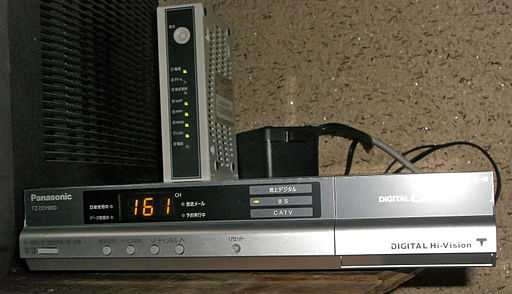Yesterday was a jam-packed crazy day at the American Association for the Advancement of Science (AAAS) meeting. I spent the day mostly attending the energy track talks and by the time it was 6 pm, I was so tired I was like a zombie. But 6 pm was Steven Chu’s plenary lecture on energy so even if I had to let whatever he said diffuse through my brain while I dozed off, I had to be there.
Which I must say: I was awake for the entire thing, even after he went way overtime and my friends and I had to leave to go attend the Kavli Media Awards dinner at the Field Museum (that one I completely fell asleep.) It was the first time I saw Steven Chu speak and his lecture was funny, the boards showing his dialogue in real-time were hilarious, and the lecture reminded me so much of a video, Vampire Energy.
Here it is. Vampire Energy, an excellent video produced by GOOD Magazine and available on YouTube, describes how household appliances consume energy, and money, while they are plugged in, even if they are not turned on. Chu in his lecture, spoke of one example: the TV set-top box. The TV set-top box is never turned off, because its programming has to be updated all the time, and you know, so that it is ready whenever we turn on the TV. God forbid we wait ten minutes for the TV to load (or ten seconds for the internet to load.)
But Chu suggests an alternative machinery to the TV set-top box that would make it much more efficient, and not have us wait for the programming to update. Most of us don’t watch TV in the middle of the night, so the box could be completely powered down while we sleep. A clock mechanism, like crystal oscillators found in digital watches, paired with memory space could be set up to have the box download the programming in the middle of the night so that we have TV right away when we want to watch it in the daytime.
According to Chu, such a change in the way our TV set-top boxes work could bring their power consumption down from 30 watts to 1 to 3 watts. This in turn, translates to a savings of some $12 billion worth of electricity, or the power produced by all the coal plants in Ohio. That’s a staggering difference, and Chu was “crushed” when the new regulations for TV set-top boxes only improve their efficiency by up to 45 percent. The reason? To achieve Chu’s scenario, TV companies would have to completely revamp their set-top boxes and they don’t really want to do so because for years, they’ve just been reusing and reusing old set-top boxes with new customers, according to Chu.
So I guess in the TV set-top box case, it’s not just about turning them off (although my mum does that every night, including the Wi-Fi, much to my frustration) but reinventing them. Still, turning things off is a good practice, I think, other than the microwave because then you’d have to set the clock each time it’s turned on again. Any manufacturers want to work on that? Finally, this brings me to a little pet peeve that I’ve had since moving to the States from Singapore. The power outlets here do not have switches! All the outlets in Singapore are accompanied with a handy switch that we can use to turn off appliances without having to plug them in and out (I guess the difference between flicking switches and plugging things is huge for a neat freak like me.) Also, it is much safer if there are switches for a power outlet because the outlet would not be live until you turn it on.
OK end rant. Time for another day at the AAAS conference!
